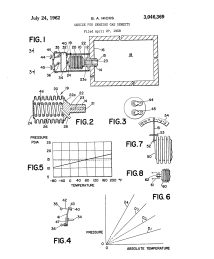Beatrice Hicks
Beatrice Hicks invented a gas density sensor that enabled the development of many advanced technologies and played a key role in making space travel possible. Hicks also co-founded the Society of Women Engineers (SWE).
Born in Orange, New Jersey, in 1919, Hicks demonstrated an aptitude for mathematics, engineering and science from a young age. Inspired by extraordinary structures such as the Empire State Building and the George Washington Bridge, she knew by age 13 that she wanted to become an engineer just like her father.
At the time, girls were not typically encouraged to pursue such a career, but when Hicks grew up, she defied society’s expectations and enrolled at the Newark College of Engineering (now the New Jersey Institute of Technology). The only woman in a class of 400 students, she earned her bachelor’s degree in chemical engineering in 1939.
After working as a research assistant at the Newark College of Engineering for three years, in 1942, Hicks was offered a position at Western Electric Co. Inc., and she became the first woman engineer to work at the company. Tasked with developing communications technologies, she designed telephone equipment that would later be used for the first long-distance phone system and invented a crystal oscillator, which helped advance aircraft communications.
To continue her education, Hicks enrolled at Stevens Institute of Technology. Here, she would earn her master’s degree in physics in 1949.
After her time at Western Electric, Hicks began working for her father’s business, Newark Controls Co., which manufactured environmental sensing equipment. Following her father’s passing in 1946, she served as vice president and director of engineering, and in 1955, she became the company’s president.
At Newark Controls, Hicks developed a gas density sensor for devices that used gas-phase materials as fuels or insulators. The central innovation of her gas sensor technology, patented in 1962, is that the device could be used to detect dangerous levels of electrical insulating gas. Crucially, this device could sense the actual amount of gas, instead of just the pressure produced by the gas, in a container over a wide range of pressures and temperatures.
Hicks’ gas density sensor would prove critical to the success of the Apollo moon missions, including the historic Apollo 11 moon landing, and it was used in the ignition systems of Saturn V rockets. The sensor also was used on Boeing 707 aircraft within antenna couplers involved in long-range communications, and for monitoring the status of stored nuclear weapons. Most uses of Hicks' sensor involved government applications.
Hicks also developed other sensors to monitor pressure, fuel levels and flow rates for liquids and gases. These included a sensor that set off an alarm when a rocket, missile or plane exceeded a speed at which the structural components could reliably maintain their integrity.
Throughout her career, Hicks was dedicated to promoting the interests of women engineers. In 1950, she co-founded SWE, and she served as president of the organization until 1952. In 1963, SWE presented Hicks with its highest honor, the Achievement Award, given "in recognition of her significant contributions to the theoretical study and analysis of sensing devices under extreme environmental conditions, and her substantial achievements in international technical understanding, professional guidance and engineering education."
Hicks also was a member of the American Society of Mechanical Engineers, Institute of Electrical and Electronic Engineers, and National Society of Professional Engineers. In 1978, she was elected to the National Academy of Engineering, becoming the sixth woman to join the organization. Her pioneering work in advancing technology and space travel also is recognized with honorary doctorates from the Hobart and William Smith College in 1958, Rensselaer Polytechnic Institute in 1965, and both Stevens Institute of Technology and Worcester Polytechnic Institute in 1978.
